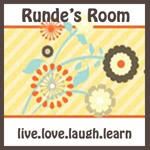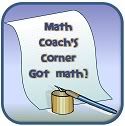Have you ever picked up a book and opened it up to the last few pages to begin reading? I have developed a bad habit of skipping to the end. Probably because I'm limited on time. I want to see if the writing is any good before I spend my valuable, precious, quiet moments reading all the words.
And so it goes with research texts. I usually scroll down to the summary first as soon as the PDF loads. Along the scrolling way, I find headings, charts or visuals that might grab my attention. Today, I'm searching for help with vocabulary instruction. I did uncover some interesting information to keep in mind while I'm planning deep vocabulary tools for my classroom.
The challenge is: VOCABULARY COMPREHENSION ASSOCIATIONS
There is a triangle of learning including Vocabulary, Decoding, and Comprehension.
I feel secure in giving my students strengths with decoding. Much like math sequences, the parts of words can be categorized and compared. However, vocabulary acquisition is a reflection of unequal opportunity. It is the bridge crossing the great cavern of comprehension. Some students come with rickety, wooden slat swinging bridges and towering fear at every step. Others enter the classroom complete with steel beams and wide-eyed views.
Understanding of the vocabulary context of use, idioms and collocation will be one of the focus changes for new Common Core language arts rigor. I was unclear about the difference between idioms and collocation (which is a new word for me!). Found this explanation by an anonymous responder on Blurt It.
A collocation is the way words combine in a language to produce natural speech and writing. For example when you say "pay attention", it could be "give attention, or put attention" but it is not, it is pay attention because it is the natural way in which native speakers express that.
An idiom is a sequence of words which has different meaning as a group from the meaning they would have if you understood them separately. For example, when you say "it's raining cats and dogs" you do not really mean that cats and dogs are falling down from the sky but that there is a heavy rain.
"Since there are so many things to learn about each piece of vocabulary
The meaning(s) of the word Its spoken and written forms What "word parts" it has (e.g., any prefix, suffix, and "root" form) Its grammatical behavior (e.g., its word class, typical grammatical patterns it occurs in) Its collocations Its register What associations it has (e.g., words that are similar or opposite in meaning) What connotations it has Its frequency . . . it is important that we as teachers only introduce a little at a time, starting with the most frequent, useful, and learnable vocabulary, and returning later to more difficult vocabulary and less frequent uses of previously learned items. We need to repeat vocabulary often, because students must work with a word or phrase many times before acquisition takes place, and we must offer variety to keep the exercises fresh and to cater to different learning styles. Finally, we need to help students understand that learning is a gradual process that takes place in small, manageable increments over time, and to encourage them to seek additional information on their own, personalizing the learning experience and tailoring it to their own specific needs."
Thus, the DEPTH of understanding demanded by Common Core!
Whew! Just to be clear, I did go back and read the whole article . . . and will re-read it again.

Here's a fun book with activities and games to explore vocabulary. There are several chapters available for FREE download. WordPlay Cafe











 Reference sites for lessons:
Reference sites for lessons:



















